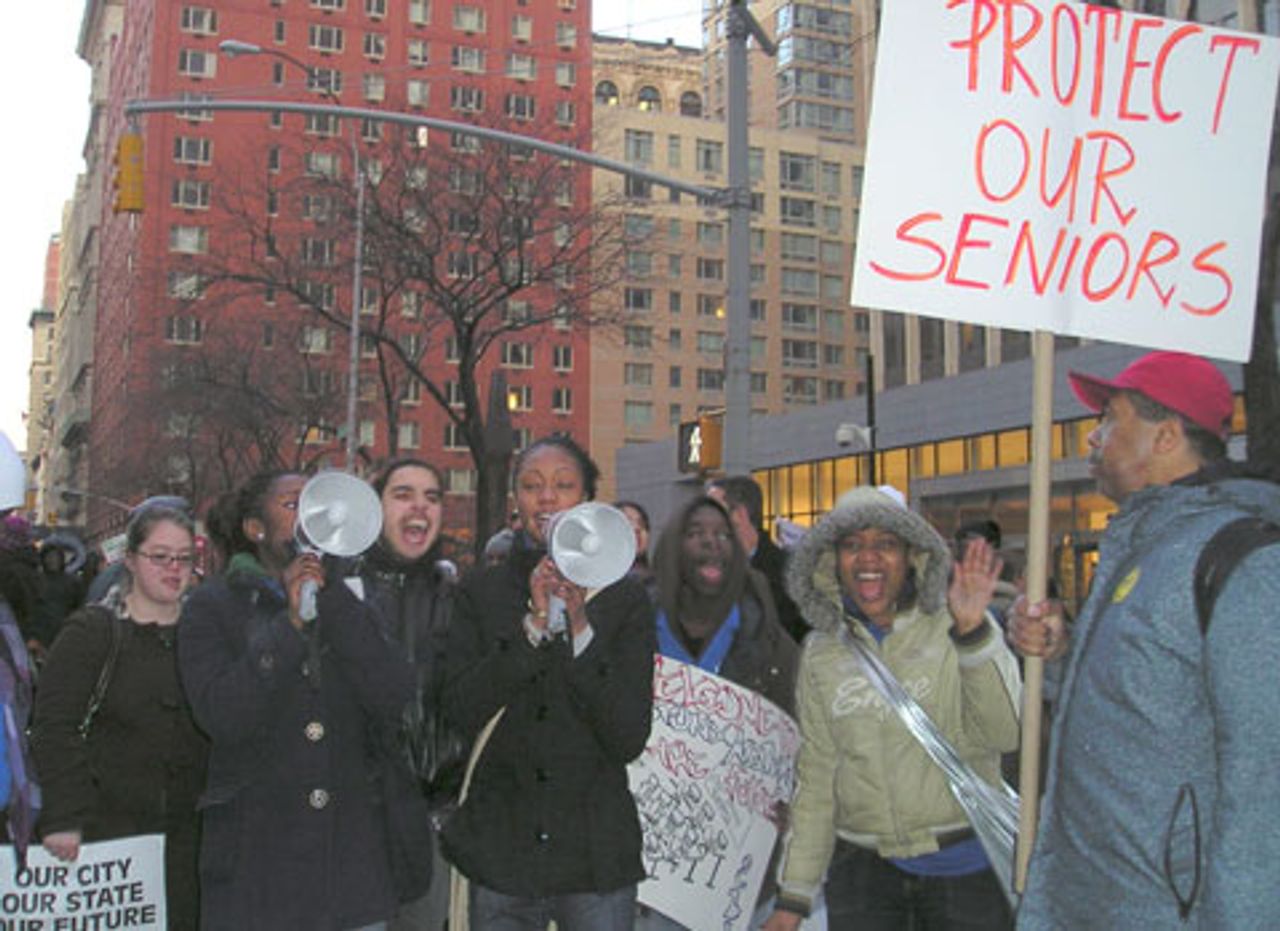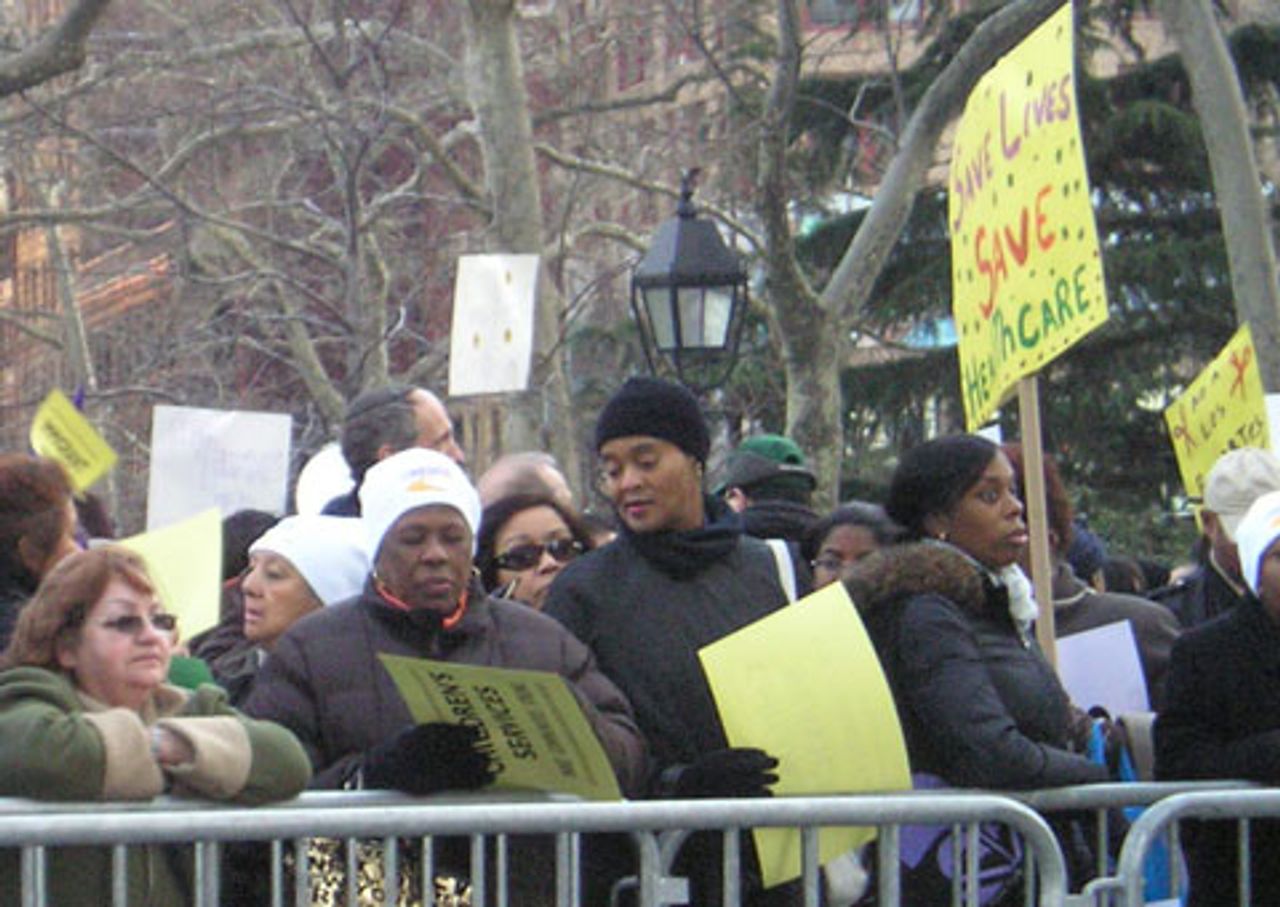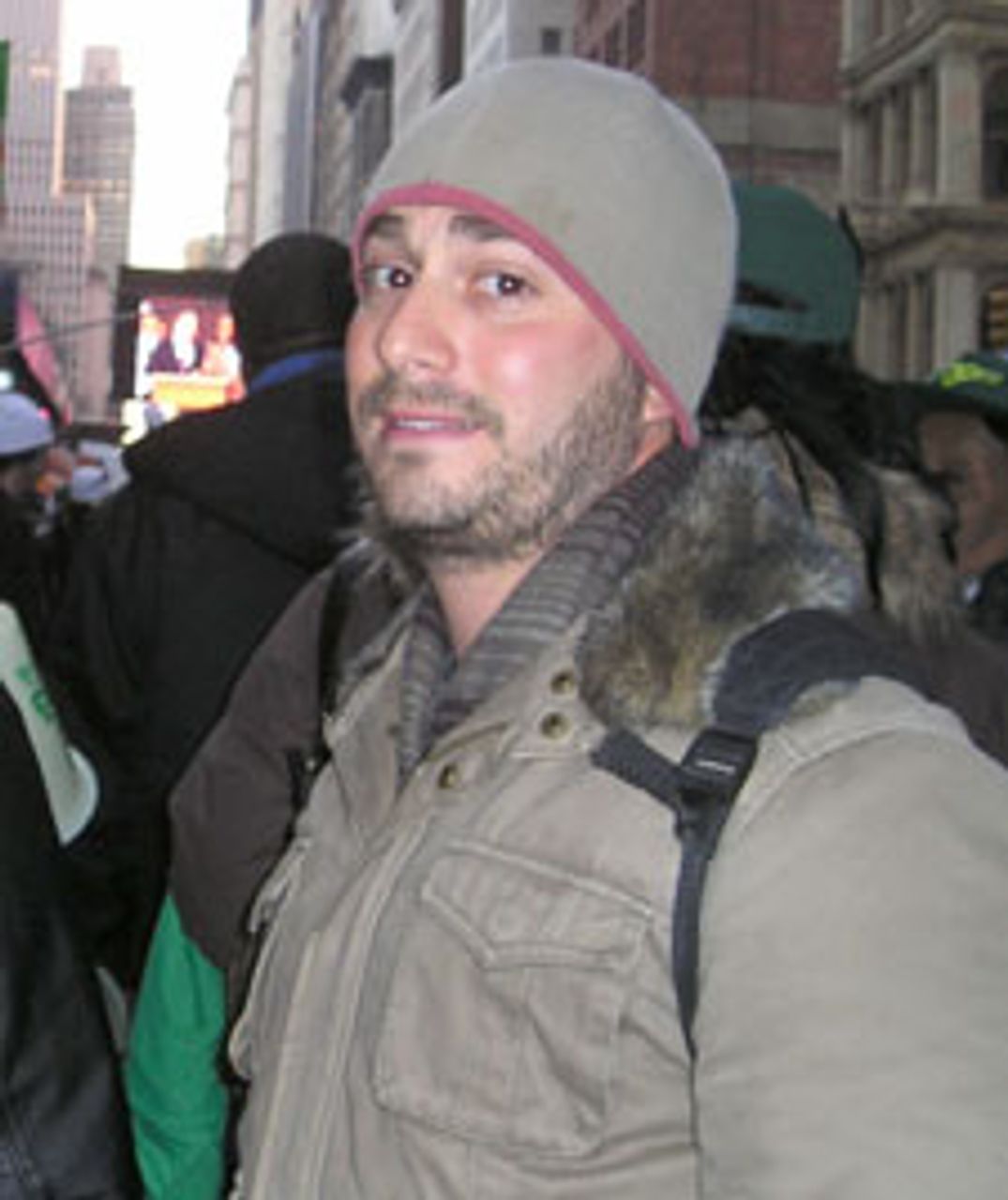Threats by the New York state government to carry out massive budget cuts and layoffs to offset its deepening fiscal crisis brought tens of thousands of workers, parents and students to a rally last Thursday at City Hall in New York City. While many in attendance expressed a determination to fight these attacks, the union officials, Democratic politicians and community advocates who dominated the platform offered no perspective outside of lobbying for a "fair share" of inadequate funding, while extolling the virtues of "shared sacrifice."
 Rally last Thursday outside New York City Hall
Rally last Thursday outside New York City HallNew York State's budget deficit is estimated to reach $14 billion in the 2010 fiscal year that begins July 1. The combined budget gaps for all states in the remainder of this fiscal year and state fiscal years 2010 and 2011 is estimated to total more than $350 billion (Center on Budget and Policy Priorities).
As in most of the states, New York's Democratic Governor David Paterson has proposed cuts that place the burden on the backs of workers and the most vulnerable. Among the proposals are cuts to the state's monthly Supplementary Security Income (SSI) provided to low-income recipients who are elderly, blind, or disabled. Nearly $2 billion in cuts to education would reduce aid to individual school districts from 3 to 13 percent. Specific programs to be eliminated include supplemental math and science programs and new-teacher mentoring programs. Resident undergraduate tuition for the State and City Universities will increase $620. A hiring freeze was put on state agencies in July with funds to be reduced 7 percent. Cuts in Medicaid are proposed with $3.5 billion in healthcare cuts affecting every hospital, nursing home and home care facility in the state.
In New York City, where the financial crisis is expected to destroy almost 300,000 jobs by mid-2010, Mayor Michael Bloomberg plans to reduce the city workforce by 22,919, with 14,000 of those from the schools. Cuts to services are to include 30 ambulance tours, one firefighter from each of 64 engine companies, and reductions in homeless prevention programs and child care. A $127 million cut to the Health and Hospitals Corporation would slash funding for clinics and ambulatory preventive care for populations that are uninsured and use these as their primary care facilities.
The billionaire mayor wants city workers to pay 10 percent of the cost of their health benefits. Revenue is to be increased by regressive taxes that fall most heavily on those with lower incomes, such as sales taxes, parking meter rates, and plastic bag charges. The new cuts and taxes would come on top of $1 billion in cuts and $1.5 billion in tax hikes Bloomberg has already pushed through. It is probable that some of the education funds from President Obama's stimulus will be siphoned off by the state.
In the face of these attacks and confronting the greatest crisis of capitalism since the Great Depression, the organizers of the protest presented their long-standing alliance with the Democratic politicians, who are carrying out the cuts, as the only political solution to the problems confronting working people. The demonstrators themselves were restricted by the police, sometimes forcefully, to pens along only two lanes of Broadway while subjected to images on giant screens of union bureaucrats denouncing greed and leading stale chants of "We're fired up, won't take no more," and "O-ba-ma."
 Demonstrators protesting against New York state budget cuts
Demonstrators protesting against New York state budget cutsTeachers, students, healthcare workers, and city employees were heavily represented at the rally, along with hotel and buildings workers and others affected by the economy and layoffs. Along with the largest public employee unions, the United Federation of Teachers (UFT) and DC 37 (the largest city employees' local), the sponsors included SEIU 1199 healthcare workers, the Democratic-allied Working Families Party, the ACORN community organization and the Alliance for Quality Education.
The main demand of the sponsors of the rally was for an increased "millionaire's tax" on incomes above $250,000, which the Center for Working Families predicts would generate $6 billion in state revenue annually, They claim that with this tax, together with the $24 billion expected for New York State from the $787 billion federal stimulus plan, most of the cuts can be avoided. This is gross speculation in the face of the inability of economists to see the bottom of the abyss as job cutting continues to accelerate. In any case, Governor Paterson, like Mayor Bloomberg, has expressed his opposition to any increase in taxes on the wealthy, insisting that he would consider such a measure only as a last resort, after sweeping budget cuts failed to produce the desired fiscal results.
The unions also demand that monies coming from the federal stimulus be directed to "effective" use for schools and healthcare by the budget-cutting governor and state legislature. However, as part of their budget campaign, the UFT and SEIU 1199 each spent millions of dollars on competing television commercials calling for the cuts not to fall on their special concerns in the schools or in the hospitals, respectively. The union leaders fear a loss of membership would cut the union dues that pay their own salaries. Expressing the distance of the bureaucracy from working and middle class families whose fear and anger are increasing together with the attacks on their jobs, education, and standard of living, SEIU 1199 President George Gresham declared at the rally "We are not trying to scare the public, we're trying to educate the public."
Randi Weingarten, head of the national as well as New York City teachers' unions and of the Municipal Labor Committee, cited Obama's call for working people to share the responsibility for an economic crisis created by the capitalist elite and their politicians. "The difficulties New Yorkers face today will require each of us to step up and help our city get through these hard times while protecting core services," she told the crowd. "Shared sacrifice means we all have to give a little to keep our collective ship afloat, and those who can afford it should give more to spare our most vulnerable the pain of devastating budget cuts."
This call for "shared sacrifice," under conditions in which trillions are being poured into Wall Street to bail out the banks, while millions are losing their jobs and homes, amounts to a pledge by the bureaucracy to help impose the burden of the capitalist crisis onto the backs of the working class.
The WSWS interviewed several of the demonstrators. Holly Blasier is an occupational therapist in a Manhattan nursing home and a delegate in the SEIU 1199 health and hospital workers' union. "I have elderly patients who cry when they are with me because they get pulled out of bed at 5:30 in the morning because there are only two nursing assistants for 39 people to get them up, change them and dress them. Until about five years ago, there used to be five nursing assistants. These patients are crying because of the kind of life they have in the nursing home, after working their whole lives. One of them is 83 and worked her whole life in Macy's."
A freshman student who came with a group of 15 from Brooklyn Technical High School said: "I can see the economic crisis. People are having to take care of how they spend their money. I am involved in student government and see how sometimes students can't go on a school trips because their families can't afford it. In Brooklyn Tech, we have over 4,000 students. We have 50. It is like a second home. With more budget cuts, we can't have all of that. We have no central air conditioning. Some summer school classes may be cut, so students may not be able to get the credits they need. And getting money for college is something we already have to think about."
A social worker from the South Bronx described the effects of the economic crisis that she is seeing: "There are more families with layoffs coming in, not having basic stuff, homeless. More and more I see families. We started a food pantry, which we didn't need to do in the past. Domestic violence is going up. But there is a freeze on hiring new social workers and other workers. We are here trying to avoid cuts, to make Bloomberg use the money as he should, to keep people employed, for kids."
 Anthony Joseph
Anthony JosephAnthony Joseph is a teacher with almost three years at a middle school, IS 71, in Brooklyn. "I am enjoying my job," he said. "I want to give back. It is a noble profession. But I am here because I am looking for social justice for my students and for myself. My teaching experience is pleasant but I could not afford to have my own family. It is a living wage for one person, not a family. And in the school, I have to control against mice and roaches. I don't think they have this problem in the Pentagon. In the morning I have to clean off the mouse shit on my desk. My school has 1,500 kids. We are good at getting grant money, but we need this private money for our public school to give our students a high level of success. I think they may lay off second- and third-year teachers at school. The writing has been on the wall for the last eight years, or even before, but it has accelerated in the last eight years. You cannot have two wars and fund everything."
The author also recommends:
The New York state budget crisis and the debate over the "millionaire's tax"
[5 March 2009]
Shifting burden from Wall Street to the working class: New York City mayor announces budget cuts
[28 January 2008]
New York state budget cuts target working class
[20 December 2008]
